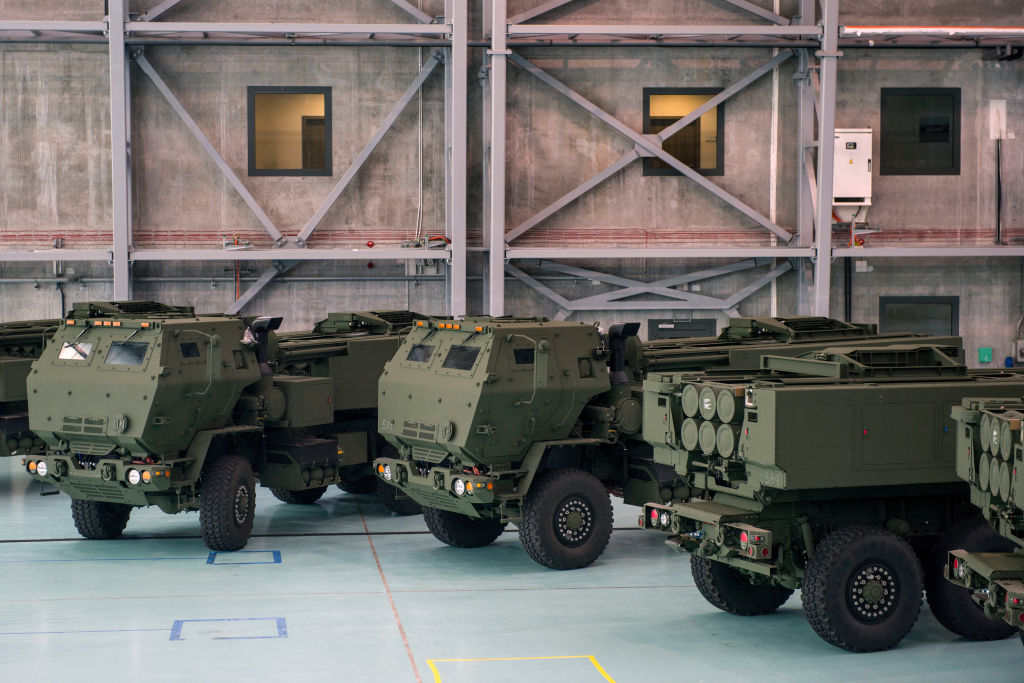In 2022, National Security Advisor Jake Sullivan said the Biden Administration was concerned that sending the Army Tactical Missile System to Ukraine could spark World War III. Today, it seems to be shrugging off that concern. While it never ruled the long-range missile out completely, 2022 was a very different time for Russia, its international military prestige and its fortunes in its ongoing war in Ukraine.
In May 2023, Biden officials said the deal for the missiles, also known as ATACMS for short, was “still in play.” Now, the Wall Street Journal reports the administration is considering sending ATACMS to Ukraine, in spite of its former reluctance.
Ukrainian forces have received other long-range weapons, including the High Mobility Artillery Rocket System, or HIMARS, that can hurl 200-pound rockets nearly 48 miles. It has become a favorite among Ukrainian troops, allowing them to hit Russian positions deep in occupied territory. They double the reach of the M777 howitzers the U.S. provided previously.
Those rockets have devastated Russian command and control deep behind the front lines of the war. But 48 miles isn’t the real limit of the HIMARS weapon system. American officials have held back rockets that can be fired by HIMARS and can hit targets an estimated 185 miles away: the Army Tactical Missile System.
In all the aid packages sent to Kyiv, President Joe Biden has never approved the transfer of the ATACMS, with the fear that striking actual Russian territory with the weapon could escalate into a wider, more intense conflict. Despite that initial fear, transfer of the long-range missile systems is pending approval at the highest levels of the Pentagon.
While positioning the new long-range missile in Kharkiv won’t allow the Ukrainian forces to hit Moscow or Saint Petersburg, it would allow them to strike deep inside Russia, including the cities of Kursk, Belgorod and the Crimean Peninsula – one of the biggest concerns to American officials.
After Kharkiv fell in September 2002, Russian officials warned the United States and its NATO allies that supplying Ukraine with longer range missiles would be crossing a red line, and that they would become “a party to the conflict.” Ukraine has promised not to use long-range missiles supplied by the U.S. to strike inside Russia. That threat had kept the weapons out of consideration.
After mercenaries led by Wagner Group chief Yevgeny Prigozhin began a mutiny that captured the city of Rostov-on-Don and began a trip to Moscow before it was voluntarily aborted, U.S. and European planners began to rethink their reasoning. The Republican-led House Foreign Affairs Committee passed a resolution calling for the administration to approve the long-range weapon.
ATACMS would allow Ukraine to strike Russian logistical targets behind Russian lines, which are currently out of reach of Ukraine’s current arsenal. Russia would be forced to move its logistical apparatus and command and control more than 200 miles from the front, seriously disrupting its ability to wage war.
The White House and the Pentagon declined to comment on any of the recent development in regard to sending the ATACMS missile, but has said many times that its policies regarding support for Ukraine is continuously under review. As of April, however, the Wall Street Journal says its sources say the ATACMS is still off the table.

